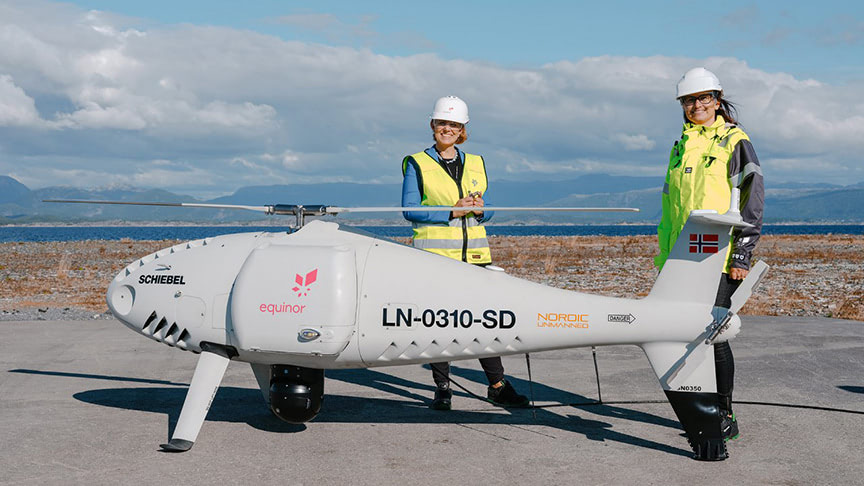There are countless examples of products and applications that combine the benefits of 3D printing and drones, generally with the former being used to make parts for the latter. But it isn’t the drone’s parts that are printed on Equinor’s Schiebel Camcopter s-100, it’s the payload. For the first time ever, a remotely-piloted drone transported a 3D printed replacement part to an offshore natural gas platform.
The printed part is a diesel nozzle holder for the lifeboats on the Troll A gas platform, hardly a superfluous component. That specific nozzle holder is no longer manufactured, making it an ideal candidate for 3D printing where there are no tooling costs or minimum quantity requirements. The turnaround time is also much shorter. The part needed only to be remodeled for 3D printing. After that, it went straight to the printer where it was printed in Inconel 718, an incredibly strong industrial alloy.

Printing the part and using the drone to deliver it to Troll A are both part of Equinor’s efforts to reduce their carbon footprint. That may sound silly coming from an oil and gas company but Equinor has publicly acknowledged their role in the emissions problem, and they state that the emissions goals of most countries are not aggressive enough. As such, Equinor is striving to be a leader in transitioning energy production to more sustainable models.
This achievement is squarely inline with that ambition. By 3D printing the part, a significant amount of waste material was spared, and by deploying a 100kg drone to deliver the part, the 80km trip to the platform used a very small amount of fuel. On top of all that, drones are just way safer than any craft that’s carrying people for obvious reasons. “Equinor aims to lead the way in utilizing new technology on the Norwegian continental shelf. Drones could reinforce safety, boost production efficiency, and contribute to lower CO2 emissions from Norwegian oil and gas,” said Arne Sigve Nylund, Executive Vice President for Development and Production Norway at Equinor.
Drones and 3D printing go so well together because they share a lot in common. They can both be rapidly deployed, they prize lightweight parts, and they’re highly flexible in their functionality. So expect to see more logistics solutions like this, and eventually the drones will just carry the printers and print requested parts while it’s en route to its destinations. Has anyone patented that? If not, I kindly ask that you not steal my idea please.










